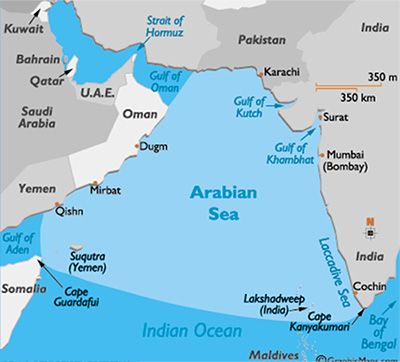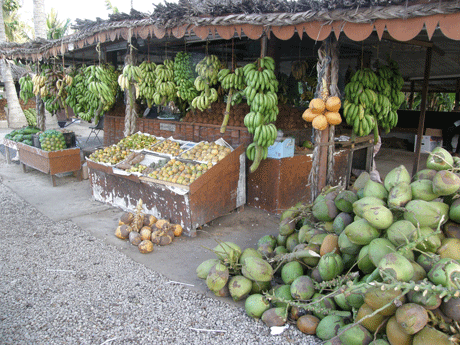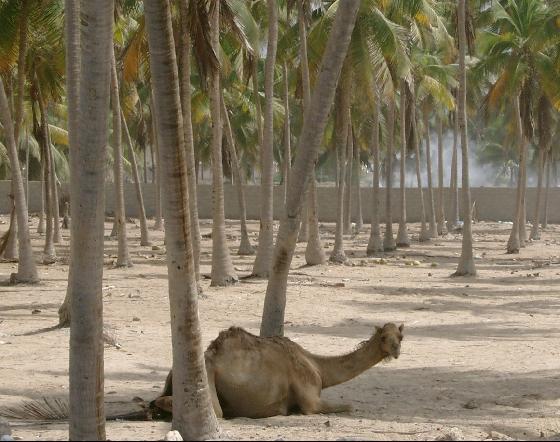As a Keralite who grew up in the Middle East (Bahrain to be specific), I always wondered how and why people from Kerala were in large in numbers in the Gulf region. As I grew older, traveled more, visited Jew Town in Kochi, read up on the Spice Route, etc. I began to learn more about my state’s role in Middle East history.
Indian immigration, past or present, has been for money. In the past it was trade, mostly by sea. The Gujarati traders dealt with textiles, and the spices predominantly came from Keralite traders. Pepper was once called “black gold” and Kerala was, and still is India’s largest pepper producer. The global spice trade owes a lot — then and now — to Kerala. And traders from the Middle East sourced much of the spices from traders from Malabar (north Kerala). But where does the Sultanate of Oman come in to all this?
Being at the tip of the Arabian Gulf, Oman is the Middle Eastern nation traders would have first landed at sailing the Arabian Sea from India.
 In 2006, my father was posted in Sohar, south of Oman, for a year-long engineering project. When he landed in Oman and drove from Muscat to Sohar, he told me about what he had seen. Oman, unlike other Gulf nations, had coconut trees! (You will most likely only find palm trees and date trees everywhere else in the Gulf). He had later visited a region called Salalah and told me about the many banana plantations he had seen there. That really piqued my interest in Oman.
In 2006, my father was posted in Sohar, south of Oman, for a year-long engineering project. When he landed in Oman and drove from Muscat to Sohar, he told me about what he had seen. Oman, unlike other Gulf nations, had coconut trees! (You will most likely only find palm trees and date trees everywhere else in the Gulf). He had later visited a region called Salalah and told me about the many banana plantations he had seen there. That really piqued my interest in Oman.
How did the banana’s reach Oman? Coconuts have an island history, and are known to travel

the seas because of its buoyancy. Did Keralites bring in crops, besides spices? Did the Malabar traders grow the first banana plantations centuries ago? Kerala, after all, is famously associated with the fruit (we produce LOTS of it). Kerala also has a history of visitors from Oman and vice versa. Salalah is the capital town of southern Omani province of Dhofar. An old king from Kerala, Cheraman Perumal, died in Dhofar. I’m not saying he’s the man credited to bringing bananas to Oman, but I’m sure the cultivation of certain tropical fruits and trees could have some historical connection tracing back to Kerala.
History aside, research more about Oman and you’ll be amazed by what you see.
When I saw photographs of Salalah my father took, I was amazed by the lush greenery in some parts of Oman, especially in the South. Oman even enjoys a monsoon season (or khareef as they call it), a rarity among Gulf nations, whose geography doesn’t offer much besides scorching heat and desert sand. So if I were to ever visit Oman, Salalah would definitely be on my ‘must-see’ list of places. It would be fun to share photos of myself at a coconut vendor, share it on Facebook, but tag the location to Oman and see how my friends react.
My friends in Dubai had also told me about Musandam, another beautiful region of coastal Oman, known for its pristine waters, dolphin sighting tours, and scuba diving. My friends being legal residents of the UAE, would drive to the border of Oman (with passports in tow), spend the weekend in Musandam and then return to UAE. Ras Al Jinz at the eastern tip of Oman is famous for its sea turtle reserve and conservation of marine life. I’d love to try and capture a photograph of a huge turtle on the beach sand!
Of course, as soon as I land in Muscat, the nation’s capital, I’d want to check out the city too. Visiting Muscat’s many museums would definitely help in learning more about Oman’s history and its trading past with India and other neighbouring nations. Then there are the souqs (markets), watching the sun set at Muttrah Corniche, and enjoying some great Omani cuisine for dinner. (Read my travel blogs and you’ll know how much I love Middle Eastern food).
The more I research about Oman, the more amazing I find it to be. Check out this video taken by an Indian who visited Jebel Shams — dubbed the “Grand Canyon” of Oman.

Although I’ve seen my share of vast desert sands in the Gulf, Oman with its unique natural landscape, unspoiled shorelines, lush green hills and biodiverse vegetation, seems to be a GCC nation like no other. After 2010, I honestly had no desire to visit the Middle East, as Dubai is the absolute pinnacle of a Middle Eastern city. But then I was enamoured by the beauty of Iran. And now Oman. At least in Oman, you’re not just stuck inside malls and gawking at materialism that’s out of most people’s reach (a la Dubai). Oman has a history I would be very curious to learn more about. It would be interesting — and refreshing — to visit a GCC nation that is quite remarkable and geographically different from the rest. Maybe it wasn’t just spices traders from Kerala brought to Oman. And I hope I this Keralite gets the chance to do discover Oman’s history one day!
This entry was made for Indiblogger’s Beautiful Oman contest.

